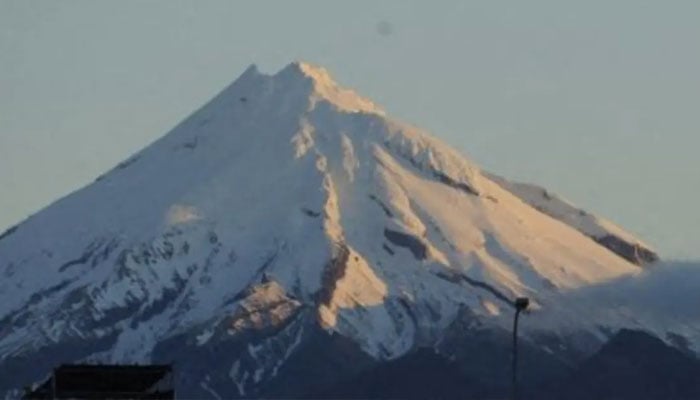
A climber on Mount Taranaki in New Zealand had a miraculous escape after falling nearly 2,000 feet down the mountain.
The climber fell 1,968 feet from his initial climbing position.
The incident occurred on Saturday when the climber was part of a group near the summit of Mount Taranaki, which stands at 8,261 feet, on New Zealand’s North Island.
Around noon local time, he lost his footing and began sliding down the mountain, eventually going out of view. Another climber from the group immediately descended to provide assistance, with support from a member of Taranaki Alpine Rescue.
Upon reaching the fallen climber, they found him with only minor injuries, considering the severity of the fall. The climber had lost his ice axe and crampons during the descent. Remarkably, the snow had softened due to recent spring weather, cushioning his fall and preventing a potentially fatal outcome.
New Zealand Police emphasized the climber’s extraordinary luck in surviving the incident, highlighting the critical role played by the softened snow. A spokesperson from Taranaki Alpine Rescue did not provide additional information regarding the rescue.
In response to the incident, authorities reiterated safety precautions for climbers in the region. These include carrying a distress beacon, informing family members of planned routes, and staying informed about safety guidelines and weather conditions.
Climbing on Mount Taranaki demands experience, knowledge, and the use of properly fitted and appropriate equipment. Neglecting these factors can lead to drastically different outcomes, as demonstrated by this incident.
Notably, in May 2021, two experienced climbers tragically lost their lives on the same mountain, falling approximately 1,000 feet from their last known location.
A local Coroner, Ian Telford, determined that the climbers had died from injuries sustained in an accidental fall. The Mountain Safety Council reported that the conditions at the time were challenging, characterized by darkness, snow, and ice. The assessment revealed that the climbers had not adequately prepared for the difficulties posed by these conditions, treating the climb as a day walk rather than a mountaineering expedition.

